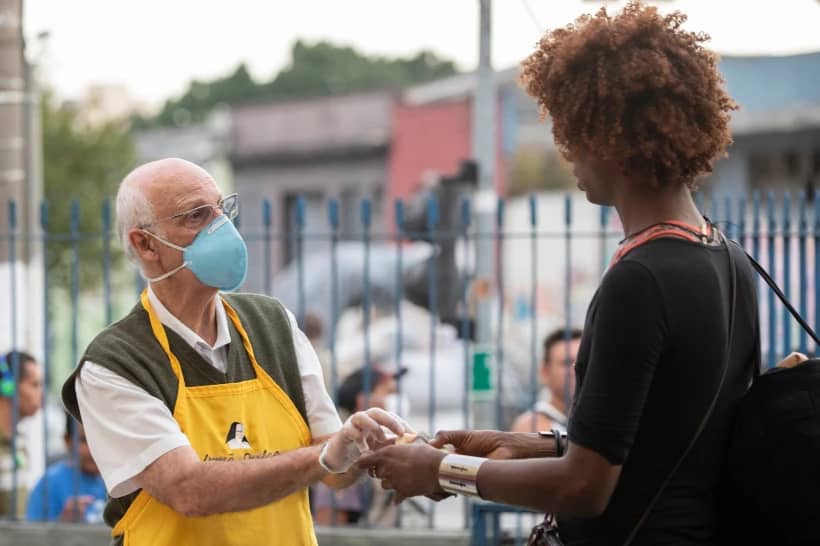MEXICO CITY — José Rico normally participates in an annual pilgrimage, walking from a suburb northeast of Mexico City to the Basilica of Our Lady of Guadalupe, arriving late on the eve of the Dec. 12 feast, when millions gather to serenade the national patroness.
This year, however, he arrived 10 days early because the basilica will close for the feast due to the COVID-19 pandemic. With the basilica scheduled to close Dec. 10-13 13, pilgrims like Rico started arriving early at the site, praying and attending Mass, leaving candles and having images blessed.
“It’s the same faith as every year,” Rico, 62, said after leaving a votive candle, which basilica officials will light on Dec. 11 as a show of people’s presence at the site. “They say that we will celebrate in our homes … we won’t come here to see the Virgin. She will visit us in our homes.”
An estimated 10 million people descended on the basilica site of Tepeyac hill in 2019, where Our Lady of Guadalupe is said to have appeared to the Indigenous farmer, St. Juan Diego, in 1531.
Most came to give thanks and speak of their pilgrimages as an act of faith, in a country where devotion to Our Lady of Guadalupe forms part of the national identity — even for non-Catholics or those not close to the church.
“We were born with this faith,” said Rico, who pulled down his face mask to show a wound on his neck from being shot in 1997 — a recovery he credited to prayer and intervention. “It’s faith and trust” in Our Lady of Guadalupe.
This year, the Archdiocese of Mexico City has organized a virtual pilgrimage. It has asked people to submit photos with their intentions and share images of their home altars and small celebrations closer to home.
Masses celebrated at the basilica will be broadcast via internet and public television.
“It’s unprecedented,” said Pauline Father Omar Sotelo Aguilar, director of the Catholic Multimedia Center. “It could be something tough for the faith of a Marian people like Mexicans. But I believe it’s a test from which the faith of believers can emerge strengthened.”
“We feel kind of sad,” said Carlos Meléndez, a construction worker, who lugged a life-size statue of Our Lady of Guadalupe to the scene. “It won’t be the same.”
Most pilgrims said they understood the health reasons for closing the site. Observers mentioned difficulties with crowds encountered by the Claretian priests at the monthly St. Jude Thaddeus feast.
Mexico’s health secretariat reports more than 100,000 COVID-19 deaths — fourth most of any country — and the numbers are increasing.
“People still don’t believe it exists,” Francisca Hernández, a food vendor, said from her neighborhood in the Iztapalapa borough, where the coronavirus claimed lives.
In the southeast suburb of Chalco, Jesuit Father Raúl Vázquez said he did not see people planning pilgrimages. Instead, priests were scheduling Masses in barrios for small groups and helping to keep celebrations small.
“We believe that it will be something very important to for ending the Christmas season and entering next year 2021 with hope,” Vázquez said. “I think it will be much more special, since we have had great losses, both human and material. In that sense (it will be) more vivid and more heartfelt.”














